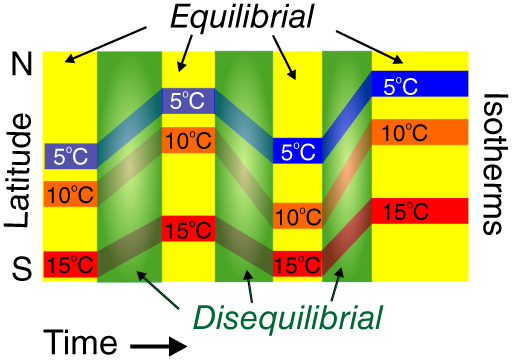Figure 1.

The expanded Plaids and Stripes Hypothesis. Imagine a landscape where species in three ecological communities (blue, orange, and red) live in equilibrium with a latitudinal gradient in temperature. This landscape is ‘striped’ in the sense that species' distributions parallel isotherms. Then a series of rapid (decades to millennia) climate changes occur. In response, species must disperse hundreds to thousands of kilometers to catch up with their new range limits, and ecological succession needs to occur before the new equilibria are reached. These processes involve time lags, which cause disequilibrial communities to occupy large areas over long periods. Together, these equilibrial and disequilibrial states create a spatio‐temporal fabric that is now ‘plaid’ rather than ‘striped’.
